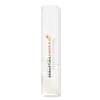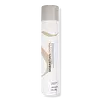What's inside
What's inside
 Benefits
Benefits

 Concerns
Concerns

 Ingredients Side-by-side
Ingredients Side-by-side

Alcohol Denat.
AntimicrobialHydrofluorocarbon 152a
Butyl Ester Of Pvm/Ma Copolymer
Glycerin
HumectantTetrahydroxypropyl Ethylenediamine
Octylacrylamide/Acrylates/Butylaminoethyl Methacrylate Copolymer
PEG-75 Lanolin
EmollientAminomethyl Propanol
BufferingParfum
MaskingPanthenol
Skin ConditioningCyclomethicone
EmollientLinoleamidopropyl Ethyldimonium Ethosulfate
Ethylhexyl Methoxycinnamate
UV AbsorberSodium PCA
HumectantDimethyl Lauramine Isostearate
EmollientAlcohol Denat., Hydrofluorocarbon 152a, Butyl Ester Of Pvm/Ma Copolymer, Glycerin, Tetrahydroxypropyl Ethylenediamine, Octylacrylamide/Acrylates/Butylaminoethyl Methacrylate Copolymer, PEG-75 Lanolin, Aminomethyl Propanol, Parfum, Panthenol, Cyclomethicone, Linoleamidopropyl Ethyldimonium Ethosulfate, Ethylhexyl Methoxycinnamate, Sodium PCA, Dimethyl Lauramine Isostearate
Alcohol Denat.
AntimicrobialHydrofluorocarbon 152a
Butyl Ester Of Pvm/Ma Copolymer
Glycerin
HumectantTetrahydroxypropyl Ethylenediamine
Octylacrylamide/Acrylates/Butylaminoethyl Methacrylate Copolymer
PEG-75 Lanolin
EmollientAminomethyl Propanol
BufferingParfum
MaskingPanthenol
Skin ConditioningLinoleamidopropyl Ethyldimonium Ethosulfate
Ethylhexyl Methoxycinnamate
UV AbsorberSodium PCA
HumectantDimethyl Lauramine Isostearate
EmollientAlcohol Denat., Hydrofluorocarbon 152a, Butyl Ester Of Pvm/Ma Copolymer, Glycerin, Tetrahydroxypropyl Ethylenediamine, Octylacrylamide/Acrylates/Butylaminoethyl Methacrylate Copolymer, PEG-75 Lanolin, Aminomethyl Propanol, Parfum, Panthenol, Linoleamidopropyl Ethyldimonium Ethosulfate, Ethylhexyl Methoxycinnamate, Sodium PCA, Dimethyl Lauramine Isostearate
Ingredients Explained
These ingredients are found in both products.
Ingredients higher up in an ingredient list are typically present in a larger amount.
Alcohol Denat. is an alcohol with a denaturant property. It is created by mixing ethanol with other additives.
This ingredient gets a bad rep because it is irritating and drying - mostly due to its astringent property. Astringents draw out natural oils in tissue, constricting pores and leaving your skin dried out.
However, alcohol denat. is not all that bad.
Due to its low molecular weight, alcohol denat. tends to evaporate quickly. One study on pig skin found half of applied alcohol evaporated in 10 seconds and less than 3% stayed on skin.
This also helps other ingredients become better absorbed upon application.
Studies are conflicted about whether this ingredient causes skin dehydration. One study from 2005 found adding emollients to propanol-based sanitizer decreased skin dryness and irritation. Another study found irritation only occurs if your skin is already damaged.
Small amounts of alcohol are generally tolerated by oily skin or people who live in humid environments.
The rule of thumb is if this alcohol is near the end of an ingredients list, it will probably not affect your skin much.
Also...
This ingredient has antimicrobial and solvent properties.
The antimicrobial property helps preserve products and increase their shelf life. As a solvent, it helps dissolve other ingredients.
Other types of astringent alcohols include:
Learn more about Alcohol Denat.Aminomethyl Propanol is used to adjust the pH of products. It is also used as a base to create other organic compounds. Having a balanced pH is important for protecting your skin.
Aminomethyl propanol is safe to use in cosmetics up to 1%. It is soluble in water.
We don't have a description for Butyl Ester Of Pvm/Ma Copolymer yet.
We don't have a description for Dimethyl Lauramine Isostearate yet.
Ethylhexyl Methoxycinnamate is an organic compound that provides UVB protection. It often goes by the more common name of octinoxate. It is created from methoxycinnamic acid and 2-ethylhexanol.
Ethylhexyl Methoxycinnamate absorbs UVB rays with wavelengths between 280-320 nm. UV absorbers protect your skin by using chemical reactions to convert UV rays into heat and energy.
UVB (290-320 nm) rays emit more energy than UVA rays. They are capable of damaging DNA, causing sunburns and are thought to be linked to skin cancer.
The state of Hawaii has banned sunscreens containing octinoxate due to its potential impact on coral reefs. More research is needed to bridge gaps in this research. The European Union allows higher levels of octinoxate in sunscreens than the US and Australia.
Ethylhexyl Methoxycinnamate is oil soluble. It is not stable and may lose efficacy when exposed to sunlight.
Learn more about Ethylhexyl MethoxycinnamateGlycerin is already naturally found in your skin. It helps moisturize and protect your skin.
A study from 2016 found glycerin to be more effective as a humectant than AHAs and hyaluronic acid.
As a humectant, it helps the skin stay hydrated by pulling moisture to your skin. The low molecular weight of glycerin allows it to pull moisture into the deeper layers of your skin.
Hydrated skin improves your skin barrier; Your skin barrier helps protect against irritants and bacteria.
Glycerin has also been found to have antimicrobial and antiviral properties. Due to these properties, glycerin is often used in wound and burn treatments.
In cosmetics, glycerin is usually derived from plants such as soybean or palm. However, it can also be sourced from animals, such as tallow or animal fat.
This ingredient is organic, colorless, odorless, and non-toxic.
Glycerin is the name for this ingredient in American English. British English uses Glycerol/Glycerine.
Learn more about GlycerinWe don't have a description for Hydrofluorocarbon 152a yet.
Linoleamidopropyl Ethyldimonium Ethosulfate is a type of sulfate.
We don't have a description for Octylacrylamide/Acrylates/Butylaminoethyl Methacrylate Copolymer yet.
Panthenol is a common ingredient that helps hydrate and soothe the skin. It is found naturally in our skin and hair.
There are two forms of panthenol: D and L.
D-panthenol is also known as dexpanthenol. Most cosmetics use dexpanthenol or a mixture of D and L-panthenol.
Panthenol is famous due to its ability to go deeper into the skin's layers. Using this ingredient has numerous pros (and no cons):
Like hyaluronic acid, panthenol is a humectant. Humectants are able to bind and hold large amounts of water to keep skin hydrated.
This ingredient works well for wound healing. It works by increasing tissue in the wound and helps close open wounds.
Once oxidized, panthenol converts to pantothenic acid. Panthothenic acid is found in all living cells.
This ingredient is also referred to as pro-vitamin B5.
Learn more about PanthenolParfum is a catch-all term for an ingredient or more that is used to give a scent to products.
Also called "fragrance", this ingredient can be a blend of hundreds of chemicals or plant oils. This means every product with "fragrance" or "parfum" in the ingredients list is a different mixture.
For instance, Habanolide is a proprietary trade name for a specific aroma chemical. When used as a fragrance ingredient in cosmetics, most aroma chemicals fall under the broad labeling category of “FRAGRANCE” or “PARFUM” according to EU and US regulations.
The term 'parfum' or 'fragrance' is not regulated in many countries. In many cases, it is up to the brand to define this term.
For instance, many brands choose to label themselves as "fragrance-free" because they are not using synthetic fragrances. However, their products may still contain ingredients such as essential oils that are considered a fragrance by INCI standards.
One example is Calendula flower extract. Calendula is an essential oil that still imparts a scent or 'fragrance'.
Depending on the blend, the ingredients in the mixture can cause allergies and sensitivities on the skin. Some ingredients that are known EU allergens include linalool and citronellol.
Parfum can also be used to mask or cover an unpleasant scent.
The bottom line is: not all fragrances/parfum/ingredients are created equally. If you are worried about fragrances, we recommend taking a closer look at an ingredient. And of course, we always recommend speaking with a professional.
Learn more about ParfumPeg-75 Lanolin is created from lanolin, a wax derived from animals with wool.
It is an emollient and emulsifier.
The 75 refers to the average number of ethylene oxide used to create this ingredient. (75 mol EO average molar ratio)
This ingredient may not be Malassezia folliculitis, or fungal-acne safe.
Learn more about PEG-75 LanolinSodium PCA is the sodium salt of pyroglutamic acid. It is naturally occurring in our skin's natural moisturizing factors where it works to maintain hydration.
The PCA stands for pyrrolidone carboxylic acid, a natural amino acid derivative.
This ingredient has skin conditioning, anti-inflammatory, and humectant properties. Humectants help hydrate your skin by drawing moisture from the air. This helps keep your skin moisturized.
Learn more about Sodium PCAWe don't have a description for Tetrahydroxypropyl Ethylenediamine yet.